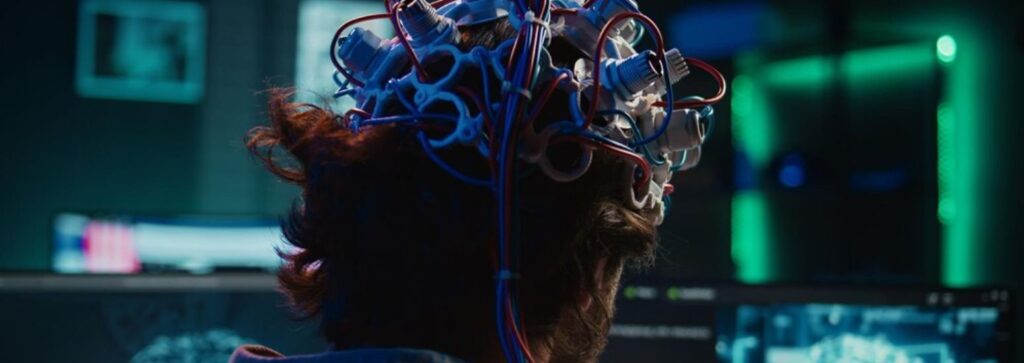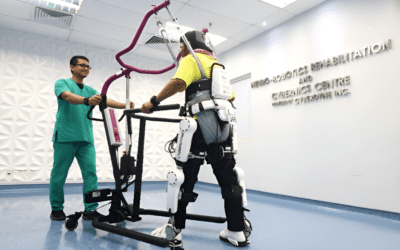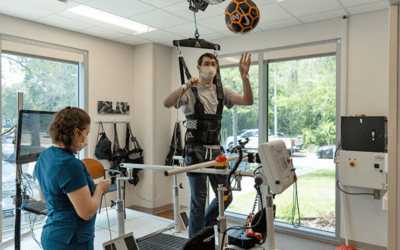Neuro Modulation is an expanding area of pain medicine that incorporates an array of non-invasive, minimally invasive, and surgical electrical therapies. Neuromodulation offers advanced interventions for managing a wide range of neurological conditions through targeted nerve stimulation, providing effective and personalised care that you can trust.
Therapeutic Neuromodulation is “the alteration of nerve activity through targeted delivery of a stimulus, such as electrical stimulation or chemical agents, to specific neurological sites in the body.
How does Neuromodulation work in chronic pain management?

Living with chronic pain can be debilitating. From making it difficult to work to keep you from enjoying family and social events, there may be times you feel desperate for relief.
Chronic pain affects 1 in 5 people. Therefore, treatment options, such as Neurostimulation therapy, have been shown to help control pain so you can live the life you want. Neurostimulation therapy can sound intimidating, but it doesn’t have to be.
What is Chronic Pain ?
Chronic pain is pain that persists longer than 12 weeks. While the source of the pain may be known, sometimes the body doesn’t turn off the pain messages to the brain even when the source is gone. In a case such as this, your doctor may diagnose you with neuropathic pain.
Neuropathic pain results from a malfunction of the nervous system following an injury or illness. This type of pain is described as a sharp, intense, or shooting pain. Due to its complexity, neuropathic pain is difficult to treat and often doesn’t respond well to standard pain medication.
Pain is an individual experience, so what works for one person may not work for another. Diagnosing the cause of pain can be a challenge. It’s important to work closely with a pain specialist to identify your condition and find the treatment that best works for you.
The Neuro Modulation therapy for pain management includes deep brain and motor cortex stimulation, spinal cord stimulation, peripheral nerve stimulation, and the non-invasive treatments of repetitive transcranial magnetic stimulation, transcranial direct current stimulation, and transcutaneous electrical nerve stimulation…
- Deep brain and motor cortex stimulation –
Unlike other surgical options, an advantage of DBS is that it is reversible and does not cause permanent damage to any part of the brain. Deep brain stimulation (DBS) is a surgical procedure that involves implanting electrodes in the brain, which deliver electrical impulses that block or change the abnormal activity that causes symptoms.
The deep brain stimulation system

- Leads (thin insulated wires) that end in electrodes that are implanted in the brain
- A small pacemaker-like device, called a pulse generator, that creates the electrical pulses
- Extension leads that carry electrical pulses from the device and are attached to the leads implanted in the brain
- Hand-held programmer device that adjusts the device’s signals and can turn the device off and on
- Spinal Cord Stimulation (SCS) –
The non-surgical stimulations
SCS is used most often after non-surgical stimulations have failed.
- Spinal cord stimulators consist of thin wires (the electrodes) and a small, pacemaker-like battery pack (the generator).
- The electrodes are placed between the spinal cord and the vertebrae (the epidural space), and the generator is placed under the skin, usually near the buttocks or abdomen.
- Spinal cord stimulators allow patients to send electrical impulses using a remote control when they feel pain. Both the remote control and its antenna are outside the body.
- Repetitive transcranial magnetic stimulation (rTMS) –
rTMS is a multisession treatment that uses magnetic fields to stimulate nerve cells associated with mood control and depression. The magnetic pulses stimulate area neurons and change the functioning of the brain circuits involved. It uses painless, magnetic pulses to help lessen the symptoms.
- Transcranial direct current stimulation (tDCS) –
Transcranial direct current stimulation (tDCS) is a non-invasive technique able to manipulate brain neuroplasticity and modulate cortical function. It is a form of Neuromodulation that uses constant, low direct current delivered via electrodes on the head.
- Transcutaneous electrical nerve stimulation (TENS)
TENS is a type of non-invasive peripheral stimulation technique. It is a modality that uses electric current to activate nerves to decrease pain.
Neuromodulation is emerging as a popular option for chronic pain management!
So, connect with us at www.rehabmodalities.com to learn more about our rehabilitation therapy.
To know more write to us: info@rehabmodalities.com



